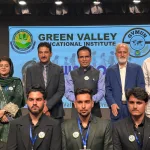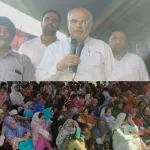Agriculture is the main economic activity in the country. As it provides raw materials for different industries, it is classified as a primary activity. Primary activities are directly dependent on environment as these refer to utilization of earth’s resources such as land, water, vegetation, building materials and minerals to produce goods. It includes hunting and gathering, pastoral activities, fishing, forestry, agriculture, mining and quarrying. While, the primary sector generates raw materials from agriculture, forestry, fishing, animal husbandry, mining etc; secondary sector on the other hand deals with activities that produce finished products ready for consumption. Over the years, in a rush to increase agricultural production, the natural resources are being overexploited, biodiversity is getting lost and planet is becoming unfit for survival of living organisims. The focus is now on secondary agriculture. Secondary Agriculture is defined as a production activity on the farm that is done beyond the Kharif, Rabi and Zaid seasons i.e. income-generating activities that use crop residues i. e paddy straw, fodder blocks and crop residue briquettes. Secondary agriculture can help drive the growth of primary agriculture.
When we talk of the prefix secondary to any activity, it typically implies the next step or higher level of operations, for example, secondary education in school, or secondary processors in computers, or secondary processing in the agro-processing sector, etc. The term secondary agriculture would therefore indicate and refer to an elevated level of agricultural operations, or those linked to agricultural activities. The Planning Commission of India had constituted a Technical Advisory Committee on Secondary Agriculture (TACSA) in 2007. The TACSA submitted its report in October 2008, but did not define the term ‘Secondary Agriculture’. Instead it states that the term ‘is very broad as it includes all food and non-food bio-resource-based products for human and industrial use’. Implicit in the TACSA report is that secondary agriculture means a high level technological capacity used at industrial level scales. Consequently, secondary agriculture, as referred by TACSA would belong to the domain of large high-tech industrial sectors.
The committee on Doubling Farmers’ Income (DFI) felt that instead of defining Secondary Agriculture by its possible products, it will be more appropriate to define it by the resources its utilizes, the scope of involvement of the agricultural community, the type of technology it deploys, and the scale of the activity. As such, for an activity to be called secondary agriculture, it must be an enterprise that has direct involvement of the agricultural community and must provide growth opportunity to the primary sector. Secondary level activities, linked to agriculture, can include economic activities from the secondary or the tertiary sectors. It is important to delineate the various productive activities, keeping in perspective the national agenda of doubling farmers’ income, promoting farmer(s) owned enterprise, and enhancing rural employment and farm household income. Therefore, secondary agriculture is defined as a productive activity at enterprise level that utilizes as raw material the primary product and by-products of agriculture and other biological resources available locally in its rural agrarian neighborhood, and/or deploy locally available skills or a high level of rural manpower, to operate/manage/ maintain the production of goods and services; and can be categorized appropriately under the Micro, Small or Medium Enterprises Development (MSMED) Act 2006. A cotton ginning unit, to separate lint and seed from locally grown cotton, using local human resources and within norms for capital investment under MSME rules would be qualified as secondary agriculture. However, a cotton textile factory, sourcing its raw material across borders and with high capital investment may not be qualified as secondary agriculture. A Jaggery making unit, in the sugarcane growing area would be secondary agriculture, but not a processing unit that procures cane molasses from other regions. Large industries, are not secondary agriculture but are a particular opportunity to farmers, as consumers of their raw material. However, if the locally produced raw material undergoes primary processing at village level, and such value added primary output is supplied to the industry, it is considered as secondary agriculture. Where the village level enterprise, uses local resources to create a value added product, it would be considered secondary agriculture.
Benefits of Secondary Agriculture are:
Shifting the Direction of Flow of Money
Agriculture is largely confined to rural settings. Various reports reveal that the per capita income of a rural household is less than that of urban household. This is because rural peoples are only seen as consumers and not as producer of good quality industrial goods. All their produce is being sold in urban areas at a ver high price. Thus there is a s an increased flow of money from rural to urban areas. The need is to transform the situation from ‘rural people as consumers of industrial goods’ to ‘rural people as producers of industrial grade output, especially the population related to farming. Secondary Agriculture in such a case is expected to bring about a shift in the direction of flow of money from urban to rural areas, especially through meeting the demand for value addition or pre-conditioning services from the food processing industries in urban areas.
Complimenting Primary Agricultural Activities
Secondary Agriculture activities complement various primary agricultural production systems and do not just supplement them. In other words, Secondary Agriculture increases the vertical elasticity of farm resources as against horizontal elasticity. Land for example is considered inelastic, but can be made vertically elastic. Given the seasonal production characteristics of agriculture in India wherein rainfed agriculture occupies 54 per cent of net sown area, the resources like land and manpower are recognized to be lying idle for significant proportion of the year. On an average, a farm family is gainfully employed on farm for about 180 days in a year. Secondary agriculture plays a complimentary role. Any farm related activity that uses the land or labour beyond the Kharif, Rabi and Zaid seasons would qualify for a Secondary Agriculture activity. Income generation activities that use the crop residues viz., paddy straw fodder blocks, crop residue briquettes, crop produce pre-conditioning for markets (cleaning, sorting and grading of crop produce), honey bee keeping, mushroom cultivation, backyard poultry etc that do not compete with the time that is required for various inter-cultivation activities of primary agriculture production qualify to be defined as a secondary agriculture activities and in a way complimenting to various primary agricultural activities .
Rural Industrialization
Secondary Agriculture is also expected to lead to rural industrialisation. It will lead to setting up of different small scale entrepreneurial ventures in the form of cottage and small scale industries in the rural settings. These enterprises can be related to seed production, planting material for horticulture crops, agro-forestry species, floriculture etc; production and supply of plant nutrient viz., vermicompost, various value added products and many others.
Halting Migration
As agriculture is being perceived as a non remunerative enterprise, more and more no. of peoples is leaving their ancestral profession and migrating to cities in search of jobs. This is what constitutes distress migration. One of the reasons for this type of migration is that other sectors of economy are not prepared for absorbing them. Under such a scenario, Secondary agriculture gives us a ray of hope and has the potential to create employment opportunities within the rural settings. Secondary agriculture can be exploited to generate productive employment and income opportunities, and this can play a critical role in halting migration from rural areas. Secondary Agriculture deserves the attention in recognition of its ability to offer in situ gainful employment opportunities.
Driving growth of Primary sector: Non-Farm Income
Secondary agriculture has also the potential to drive the growth of primary agriculture sector. It can increase the non farm income of the farming communities. Secondary Agriculture also has a bearing on climate change adaptation and its mitigation, small farm viability and profitability, food security, nutrition, sustainable utilization of natural resources and optimal usage of produce from primary agriculture and farm incomes.
It is important to strengthen and expand secondary agriculture and link it to primary agriculture. At the same time, capacity building of field functionaries and farming communities on secondary agriculture through trainings and sensitization or diploma and certificate programmes is also essential. The SAUs also need to revise their curriculum to give more focus to secondary agriculture.
(The Author is Faculty at SKUAST-K and can be reached at [email protected])





